
Pulsar P150 vs Apache RTR 160 2V - Comparison Review
- Dec 23, 2022
- Views : 6554

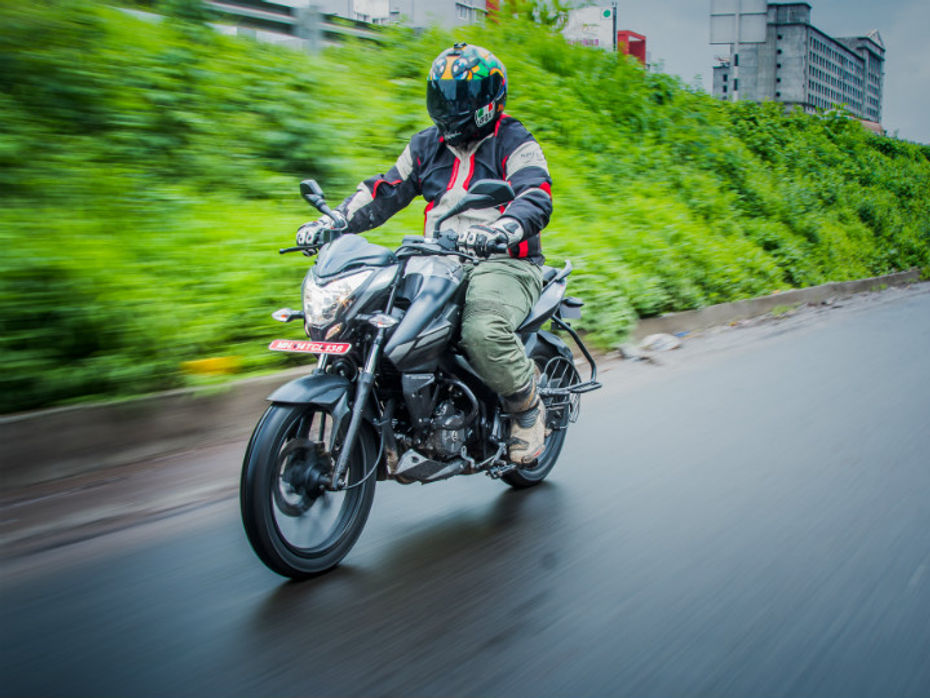
When Bajaj launched the Pulsar 150 and Pulsar 180, they were among the most iconic motorcycles in the Indian biking history. With accessible pricing, the 150 gave Indian bikers their first taste of performance at a time when the commuter motorcycles dominated proceedings. The Pulsar enjoyed a cult status in the hearts of young Indian bikers for many years but the bike was showing its age and now almost feels commuter-ish with competition having made up ground. What Bajaj needed was a scion to carry forward its legacy and after making enthusiasts wait many years, Bajaj has done just that with the new Pulsar NS 160. With 150-160cc bikes witnessing high demand, especially among youngsters owing to the balance they offer between style, performance and pricing, Bajaj has decided to tap this highly lucrative segment with the new Pulsar NS 160. So how good is the new Pulsar? Let’s find out.
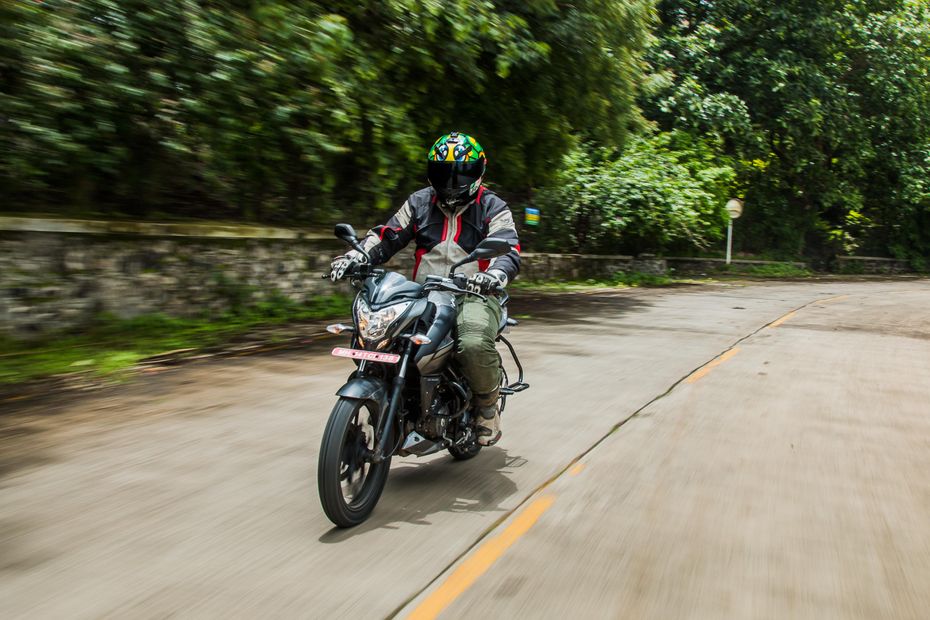
Design & Features:

The Bajaj Pulsar NS 160 borrows its design from its elder sibling, the Bajaj Pulsar NS 200 which was reintroduced earlier this year. Despite the fact that, the basic design is almost half a decade old, the new Pulsar NS 160 does look appealing. Keeping with the spirit of a streetbike, the new bike gets similar muscular and aggressive styling. Up front one is welcomed by a sharp-looking headlight, move ahead a bit and the chiselled fuel tank and extensions grab your attention the most. Bajaj designers have smartly used the dual-tone effect in enhancing the visual appeal of the bike and we particularly liked the 160 font on the tank extension.
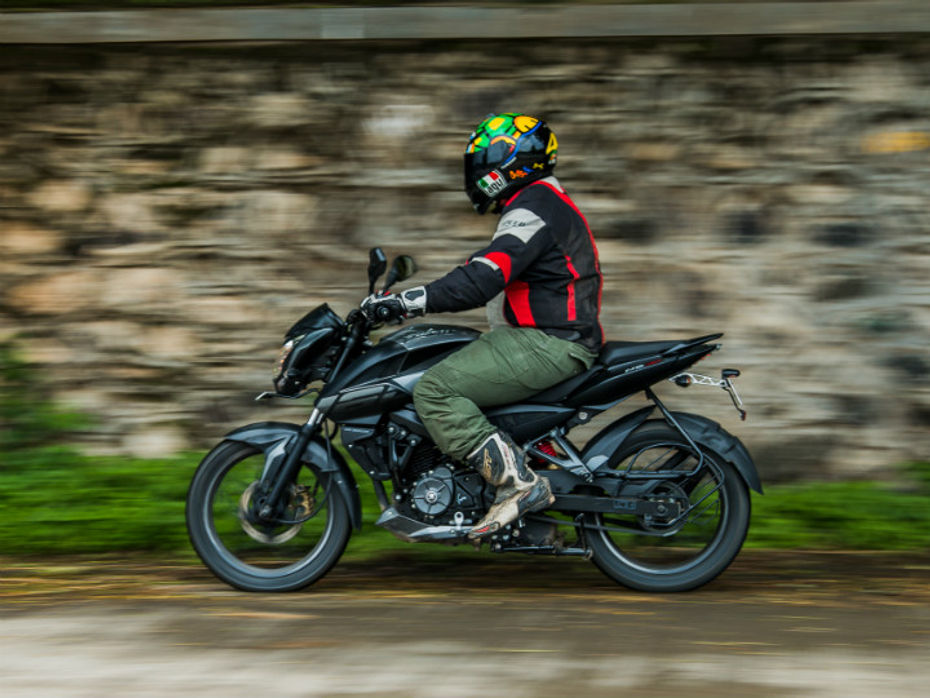
The saree guard is a petite unit and it doesn’t stand out like a sore thumb. As directed by laws, 70 per cent of the rear-wheel should be covered and this has been achieved by employing a tyre hugger, endowing the tail section with an uncluttered design.
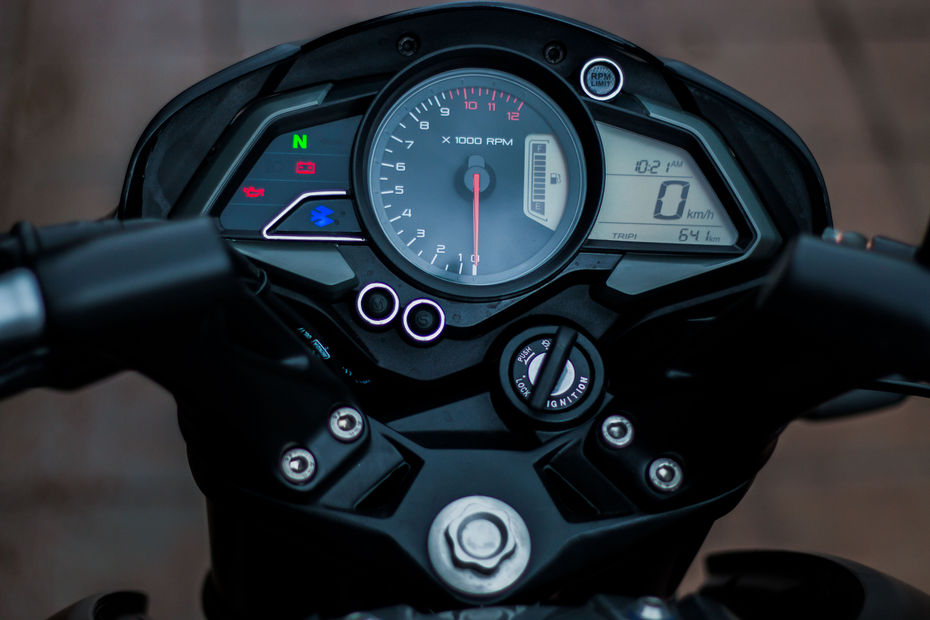
The instrument console is the same semi-digital unit as seen on the Pulsar NS 200 with a large analogue tachometer and it also gets a gear shift light. Switch gear quality is likeable but I don’t like the turn indicator switch which has a spongy button in the middle to cancel out the lights. Overall build quality along with fit and finish levels are impressive.

The highlight of the Pulsar NS 160 has to be the new 160cc motor. The 160.3cc motor is based on the 150cc engine that did duty on the now discontinued Bajaj Pulsar AS 150. Talking about numbers, the Pulsar NS 160’s engine develops 15.5PS at 8,500rpm and 14.6Nm at 6,500rpm, which is a drop of 1.5PS in comparison to the AS 150’s mill but torque has risen by 1.6Nm. According to Bajaj officials, the engine wasn’t stressed much to improve refinement and make it more frugal. We only got to ride the bike for under an hour and one thing we can confirm is that the performance of the bike is likeable.
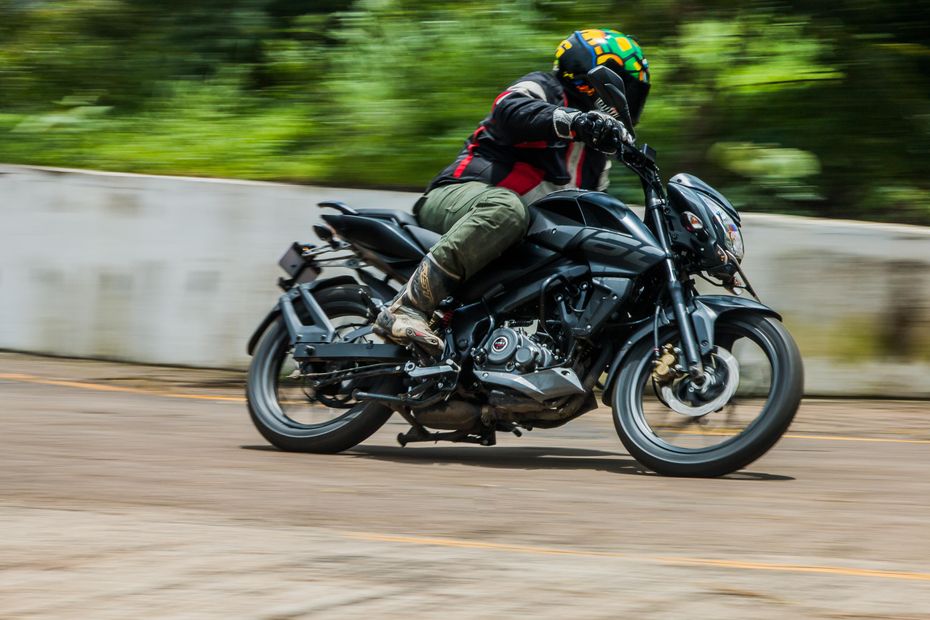
It picks momentum swiftly and feels eager while offering a linear power delivery. Going by my gut feeling it does feel fast accelerating to 60kmph, maybe the fastest, but we will have to test the bike to verify my claim. While the engine delivers performance, what it lacks is refinement. Vibes kick-in post 4,000rpm and get severe till 7,000rpm post which they subdue a bit. The engine also sounded gruff at higher speeds which is a bit surprising as the AS 150 motor felt quieter and more refined. Cruising speed is around 90kmph with vibrations for company that can be felt from the tank and handlebars. The gear ratios are well spread out, with the shorter first and second gear to extract the low-end grunt while riding in city.
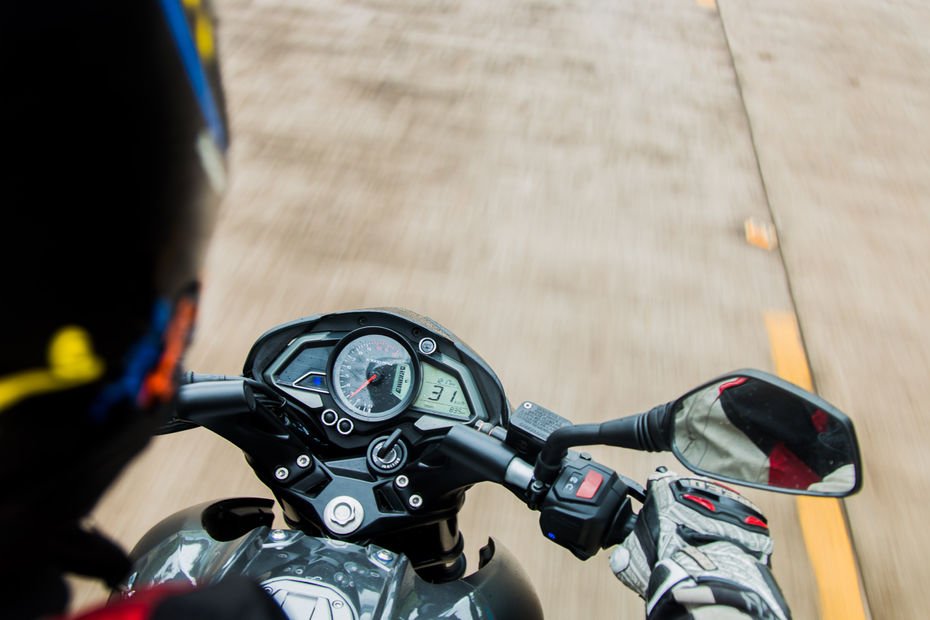
Clutch action is light which made the bike easy to ride in the mild traffic that I encountered on my short ride. The new Pulsar NS160 does deliver on the excitement front but we would have liked a more refined motor on the lines of the Suzuki Gixxer and the Yamaha FZS-Fi. Bajaj haven’t claimed any mileage figures but we expect it to be around 45-50kmpl which is the standard in the class.
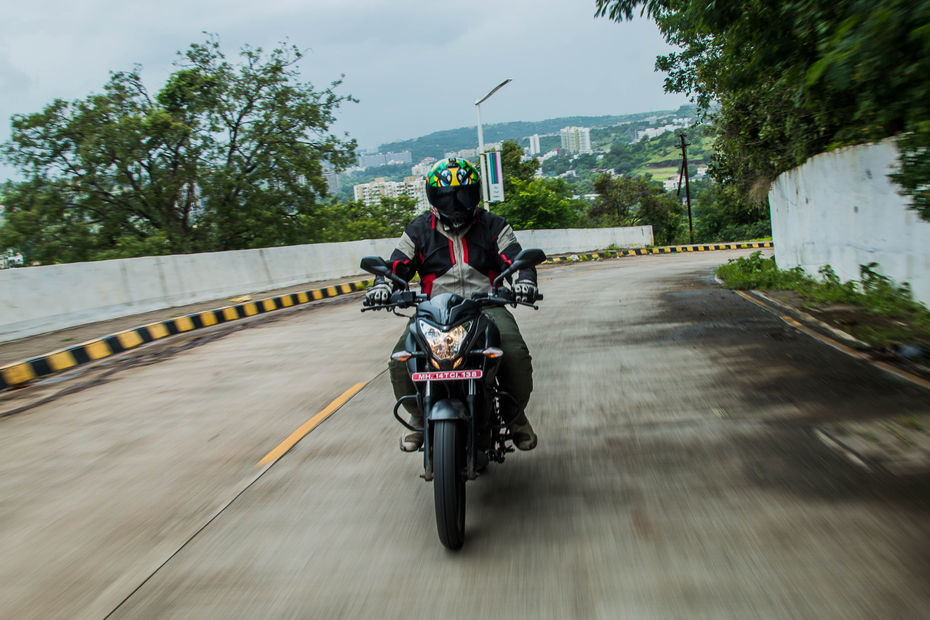
Ride, Handling & Braking:
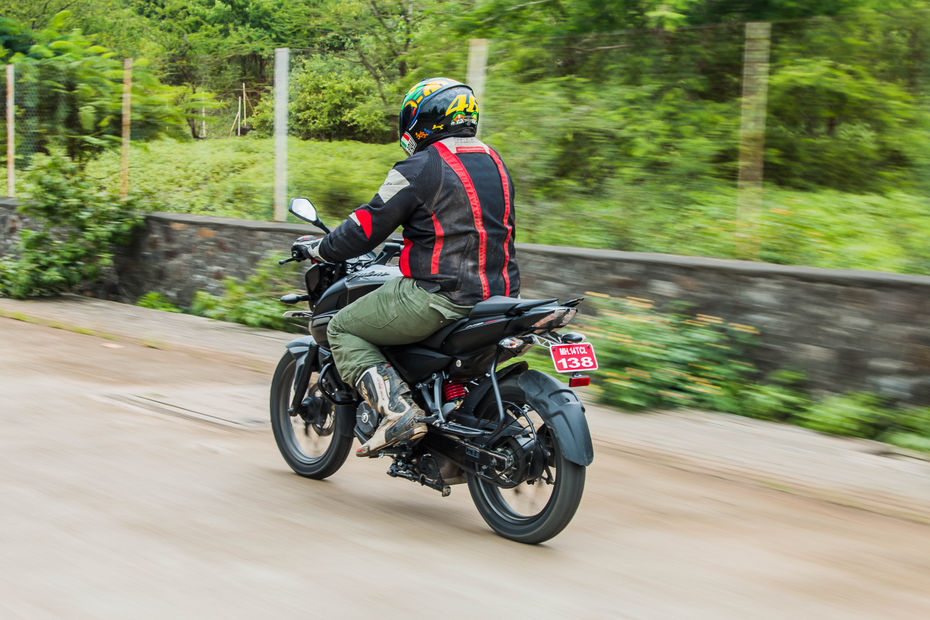
The riding position is similar to the Pulsar NS 200 with clip-on handle bars and marginally rear-set footpegs which results in a slightly sporty but comfortable riding posture. The large fuel tank also gives you a feeling that you are aboard a much more powerful machine. The 805mm saddle height is significantly higher than its rivals, while I didn’t face any problems (I’m 5 feet 10 inches tall) shorter riders might find it a bit daunting. The perimeter frame has been carried forward from the Pulsar NS 200 which out shines the more traditional diamond type frame as seen on its rivals.

But unlike its rivals who wear fat 90 section front tyre and 140 section rear tyres, the new Pulsar gets 80 section rubber at front and relatively slimmer 110 section rear, great for mileage but aesthetically it loses points to its rivals. I was a bit sceptical on whether the skinny tyre will be able to do justice to the perimeter frame and gladly it did.
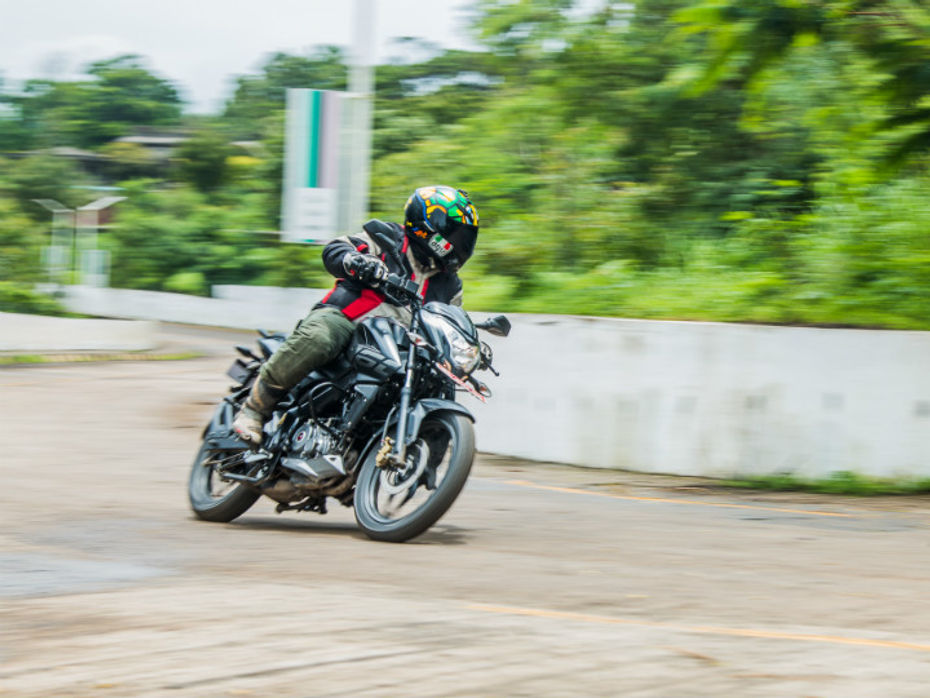
Admittedly, I didn’t push the bike hard around corners on the rain soaked tarmac but the handling of the Pulsar NS 160 is predictable and not for one moment did the bike feel twitchy. Unlike the Pulsar NS 200 which feels front heavy, its younger sibling felt nimble on its feet and very easy to manoeuvre. The one aspect of the Pulsar NS 160 that really impressed me is its brilliant ride quality. Given the onslaught of monsoons, road surfaces aren’t in great shape and the bike rode over undulations and potholes without breaking a sweat.
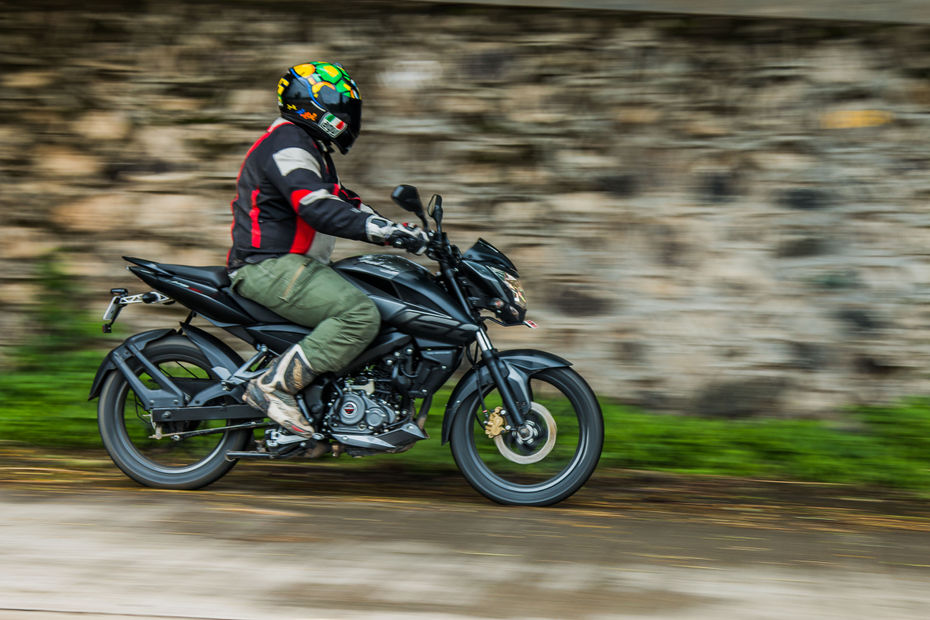
The Bajaj Pulsar NS 160 is a well-rounded product and feels like the rightful heir to the Bajaj Pulsar. The aggressive styling will surely pull youngsters who want their machines to stand out from the crowd while the Rs 78,363 (ex-showroom, Delhi) price tag means that it will make a smaller dent in their parents pocket who are most likely to fund this acquisition.

Engine vibes are its achilles heel while reliability in the longer run remains questionable but as a motorcycle, the Bajaj Pulsar NS 160 ticks all the right boxes. The 150-160cc space is witnessing a lot of action and the new Pulsar looks set to make its mark in this segment and its rivals (Suzuki Gixxer, Yamaha FZ Fi and Honda CB Hornet 160R) should be worried. To replicate the success of the Bajaj Pulsar 150 is a rather uphill task, whether the new Pulsar NS 160 gets lucky or fades out like the Pulsar AS 150 is something only time will answer.
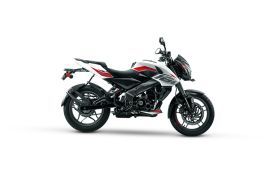

Pulsar P150 vs Apache RTR 160 2V - Comparison Review

TVS Apache RTR 160 2V Road Test Review: It Just Wants To Have Fun

2023 Bajaj Pulsar NS200 And Pulsar NS160 First Ride Review: Going...

TVS Apache RTR 160 4V vs Bajaj Pulsar N160 Real-world Comparison...

India’s Best 160cc Sporty Commuter Is…

Bajaj Pulsar N160 First Ride Review: Pulsarmaniacs Rejoice

Motomax Insta Shine Review: Can It Really Bring A Shine To Your Bike?

Yamaha MT-15 V2 vs TVS Apache RTR 200 4V Comparison Road Test: A...

Yamaha MT-15 Version 2.0 Road Test Review - The Perfect Imperfection
 TVS Apache RTR 160
TVS Apache RTR 160
 Bajaj Pulsar 150
Bajaj Pulsar 150
 Bajaj Pulsar NS200
Bajaj Pulsar NS200
 TVS Apache RTR 160 4V
TVS Apache RTR 160 4V
 Bajaj Pulsar N160
Bajaj Pulsar N160
India's largest automotive community
 Bajaj Pulsar NS200
Rs. 1.58 Lakh
Bajaj Pulsar NS200
Rs. 1.58 Lakh
 Bajaj Pulsar 125
Rs. 83,846
Bajaj Pulsar 125
Rs. 83,846
 Bajaj Pulsar NS 125
Rs. 1.01 Lakh
Bajaj Pulsar NS 125
Rs. 1.01 Lakh
 Bajaj Pulsar N160
Rs. 1.33 Lakh
Bajaj Pulsar N160
Rs. 1.33 Lakh
 Bajaj Pulsar 150
Rs. 1.10 Lakh
Bajaj Pulsar 150
Rs. 1.10 Lakh
 Bajaj Chetak
Rs. 1.20 Lakh
Bajaj Chetak
Rs. 1.20 Lakh
![Bajaj Chetak [2020 - 2024] Bajaj Chetak [2020 - 2024]](https://media.zigcdn.com/media/model/2024/Sep/bajaj-chetak-2025-right-side-view_135x90.jpg) Bajaj Chetak [2020 - 2024]
Rs. 99,998
Bajaj Chetak [2020 - 2024]
Rs. 99,998